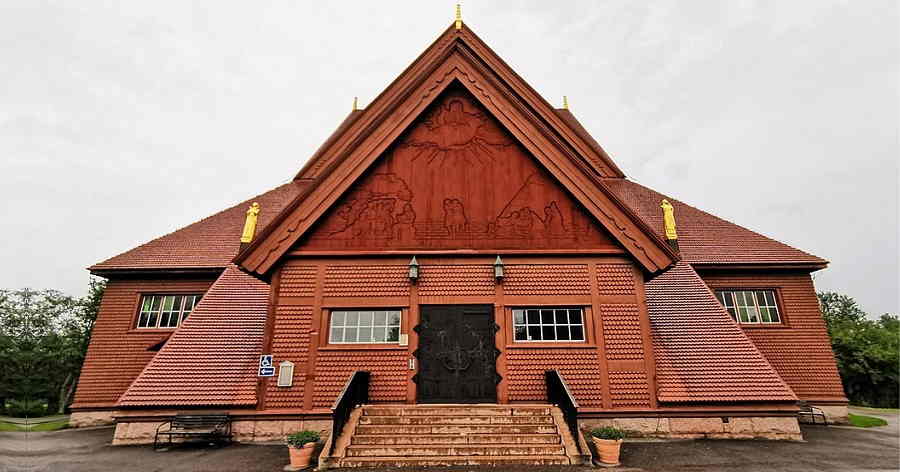
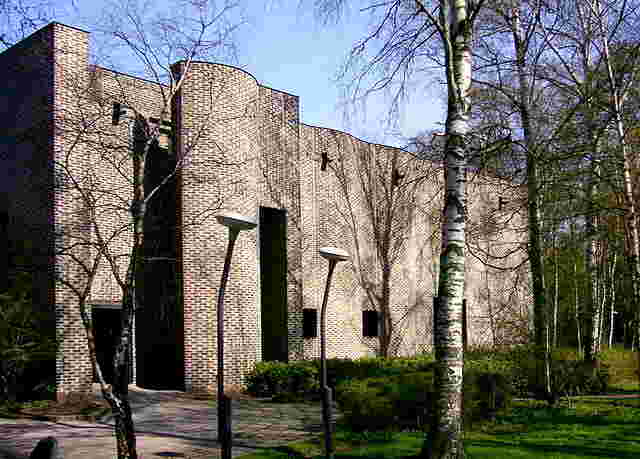
Markuskyrkan is a church in the city of Stockholm, Sweden. It is located in the Gamla Stan district, the old town of Stockholm, and is one of the oldest churches in the city. The church was built in the 13th century and is dedicated to St. Mark, the patron saint of Venice. The church has a Romanesque style, with a rectangular nave and two aisles, one on each side. The walls are made of brick and the interior is decorated with frescoes, paintings and sculptures. The most notable feature of the church is its impressive vaults, featuring a variety of designs. The church also has an organ, which is used during services. The church has been the site of many important events in Swedish history, such as royal weddings and funerals. The church also served as a refuge for Swedish royalty during the Swedish War of Liberation in the late 1700s. In recent years, Markuskyrkan is an important part of Stockholm’s history and culture, and it is a place to visit for anyone interested in the city’s history and culture.
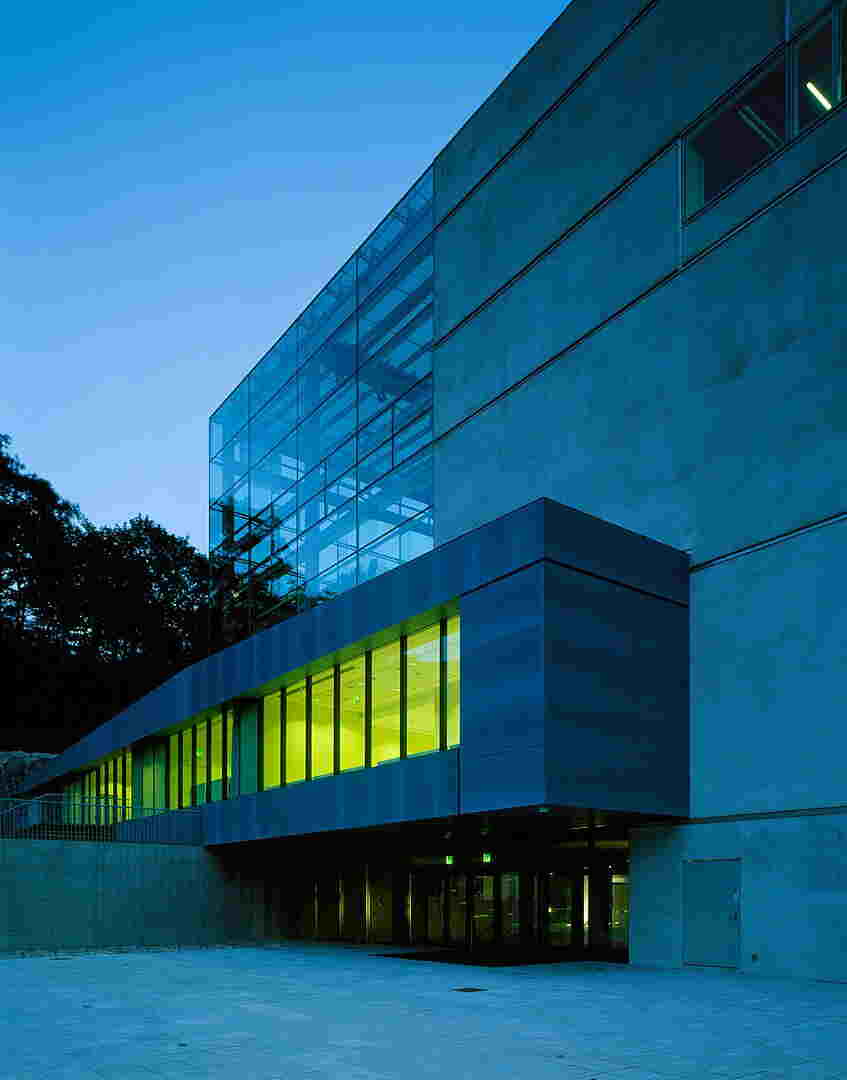
The Museum of World Culture (MWC) is located in Gothenburg, Sweden and is dedicated to the study and appreciation of cultural diversity and global interconnectivity. It seeks to foster understanding between people of different cultures, celebrate the richness of cultural heritage, and promote appreciation of cultural diversity. The MWC was established in 2001 and is the largest cultural museum in Sweden. It contains a wide range of artifacts and displays from around the world, as well as a library and a research center. The museum has an impressive collection of about 200,000 objects from around the world, including textiles, photographs, artworks, and architectural elements, among others. The museum is divided into several sections, each with its own focus. The Permanent Exhibition section houses a collection of artifacts from around the world that illustrate the development of human culture and its significance in today’s globalized world. It also features a timeline of global events and interactive audio-visual displays. Other sections include the World Culture Gallery, which showcases a range of artifacts from different cultures, and the World Culture Museum, which displays works of art, photographs, and other objects from around the world. The MWC is an important institution in Sweden, and its mission is to inspire appreciation of cultural diversity and global interconnectivity.
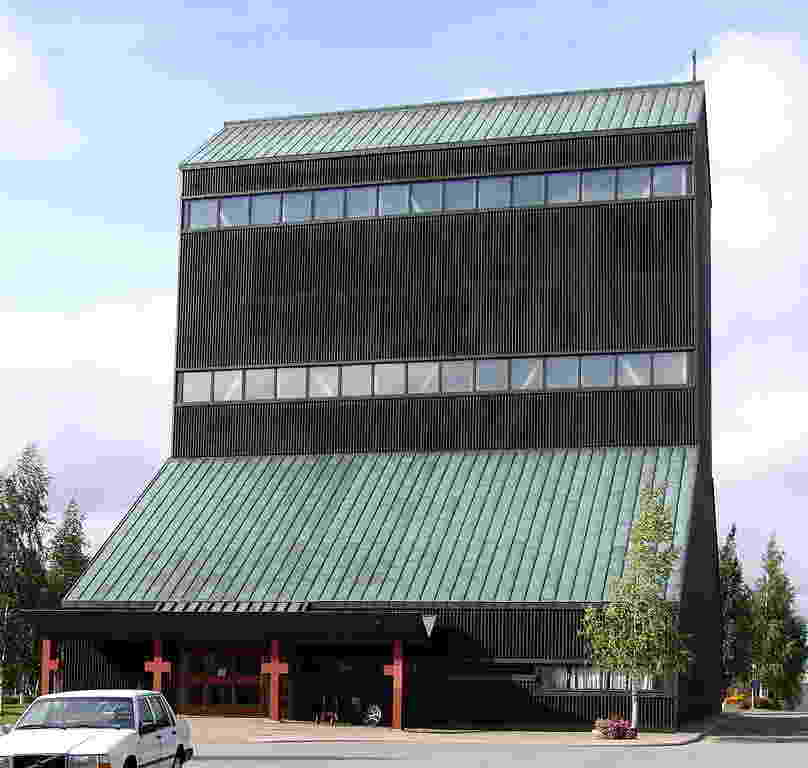
Haparanda Church, located in the coastal city of Haparanda in Sweden, is a historic church that has been a part of the local community for hundreds of years. The church was built in the early 1700s and has a classic baroque style. The building itself is quite imposing, with its tall spire rising up from the surrounding area. The exterior is made of wood and is painted a bright white, while the interior is adorned with traditional paintings and decorations. The church is the home of a Lutheran congregation and has been used for regular services since it was first built. It also serves as a popular venue for weddings and other special events. The church is made up of two main parts, the nave and the choir. The nave is the main area of the church, where the congregation sits and takes part in services. The church is also a popular venue for concerts and other performances. It also serves as a reminder of the area's history, with its long-standing ties to the Swedish Royal Family. Haparanda Church is the final resting place of several members of the family, including King Carl XIV Johan who died in 1844.
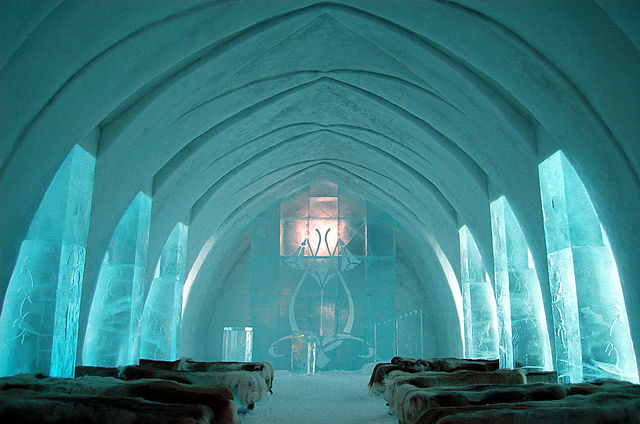
The Ice Hotel is a unique, one-of-a-kind experience. Located in the small village of Jukkasjärvi, Sweden, the Ice Hotel is a temporary structure built of snow and ice that melts away each spring. The Ice Hotel was first built in 1989 and has since become an iconic destination for travelers seeking an unforgettable experience. Each year, the hotel is redesigned and rebuilt from scratch, allowing guests to enjoy a new and exciting experience each time they return. The hotel features a variety of accommodations, ranging from simple ice chambers to luxurious suites. All of the rooms feature beds made of ice and are kept at a temperature of -5°C. Guests have the option to rent sleeping bags and thermal clothing to keep them warm through the night. The hotel also features a bar and restaurant where guests can enjoy ice sculptures and cocktails made from ice blocks. The bar is open until late and often features live music and a variety of entertainment. The hotel also offers a variety of activities for guests to enjoy, including snowmobiling, ice fishing, and snow-shoeing. Guests can also take part in guided tours of the area, which offer breathtaking views of the region. The Ice Hotel is a destination like no other.

Kiruna Church is a beautiful, bright red wooden building located in the city of Kiruna in the Norrbotten region of northern Sweden. Built in 1912, it is the largest wooden church in the country and serves as a major landmark of the city. The structure of the building is unique, with the main part of the church built in the style of a classic wooden church, but with a large octagonal tower and spire rising up from the center. The church is decorated with ornate carvings around the doors and windows, as well as intricate woodwork in the interior. The interior of the church is spacious and open, with a central aisle leading to the altar and a large pipe organ at the front of the church. The walls are decorated with intricate paintings, sculptures, and stained glass windows that depict various biblical scenes. Outside the church, the grounds are beautifully landscaped and filled with lush greenery and flowers. There is a large garden in the front of the church with benches for visitors to sit and relax, as well as a memorial garden dedicated to those who lost their lives in the two World Wars. Kiruna Church is a popular destination for both tourists and locals alike, with many people coming to admire its unique architecture and peaceful atmosphere. The church also hosts a variety of events throughout the year, including concerts, lectures, and art exhibitions. In addition to its architectural beauty, Kiruna Church is also a symbol of the city's long-standing commitment to its religious heritage.
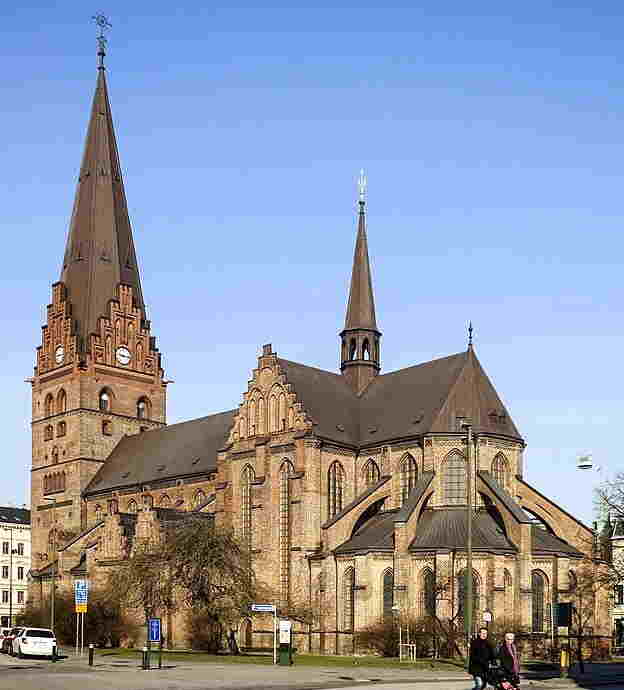
St. Peter's Church, Malmö, is one of the most impressive and beautiful churches in Sweden. Located in the historical city of Malmö, the church is a stunning example of Gothic architecture, with its tall spires, intricate carvings, and detailed stained glass windows. The church itself was constructed in the mid-14th century, making it one of the oldest churches in Sweden. The church was built in the Gothic style, and is constructed out of sandstone and brick. The exterior of the church is dominated by two tall spires, which reach up to a height of 70 metres. The spires are decorated with intricate carvings, and are believed to have been completed by the master mason Johannes Andersen. The walls of the church are also decorated with a number of sculptures, depicting scenes from the Bible. Inside the church, visitors can admire the stunning stained glass windows, which depict scenes from the Bible, as well as images of saints and other religious figures. The church also features a number of wooden sculptures, and a large stone pulpit. The church also features a number of other attractions, such as the crypt, which is believed to contain the remains of several important figures from Malmö's history. There is also an exhibit of religious art, as well as a museum dedicated to the history of St. Peter's Church. St. Peter's Church is a stunning example of Gothic architecture, and is an important part of Malmö's history and culture.
Ekonologia House Sweden is an innovative and sustainable architectural marvel located in the heart of Sweden, renowned for its forward-thinking design and eco-friendly features. This stunning structure represents a groundbreaking approach to sustainable living, combining cutting-edge technology with environmentally conscious principles to create a model for future sustainable architecture. The primary goal of Ekonologia House is to achieve net-zero energy consumption and carbon neutrality, making it a beacon of sustainability in the construction industry. The house utilizes a combination of renewable energy sources, such as solar panels, wind turbines, and geothermal systems, to generate its own energy and reduce its dependence on the grid. This self-sufficiency not only minimizes its environmental impact but also serves as a testament to the feasibility of sustainable energy solutions.
The architectural design of Ekonologia House is characterized by its integration with nature. The building's organic shapes and use of natural materials blend harmoniously with the surrounding landscape. Large windows and skylights allow ample natural light to permeate the interior, reducing the need for artificial lighting and enhancing the occupants' connection to nature.Inside, the house is equipped with state-of-the-art technology for energy management and efficiency. Smart home systems control lighting, heating, and cooling, optimizing energy usage based on occupancy and weather conditions. Advanced insulation materials and passive heating and cooling techniques maintain a comfortable interior temperature year-round without excessive energy consumption. Water conservation is also a key focus of Ekonologia House Sweden. The building incorporates rainwater harvesting systems, greywater recycling, and low-flow fixtures to minimize water wastage and promote responsible water usage.
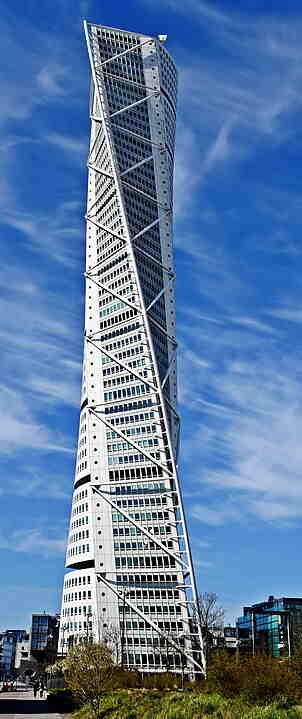
Turning Torso is an iconic skyscraper located in Malmö, Sweden. Designed by the renowned Spanish architect, Santiago Calatrava, it is renowned for its unique, twisting form. Standing at 190 meters tall, and comprising 54 storeys, it is the tallest building in Scandinavia. The inspiration for Turning Torso came from a sculpture of the same name, created by Calatrava in 1990. The sculpture was based upon the human form, and the building reflects this. Composed of nine segments, the tower gradually twists round as it gets higher, giving it the impression of a human body twisting into a standing position. Each of the nine segments are slightly skewed, and the building twists 90 degrees from the base to the top. The building is constructed from reinforced concrete, and features a steel frame to provide additional support. The exterior is clad in glass and white stone panels, which reflect the city’s maritime heritage and give the building a modern, yet timeless, aesthetic. Turning Torso has been a great success, and is admired both for its innovative design and its environmental credentials. The building is equipped with an advanced energy management system and is designed to be energy efficient. The building also has a number of green roofs, which provide insulation and water retention, and help to reduce the building’s overall energy consumption. Turning Torso has become an iconic symbol of Malmö and is a popular tourist attraction. The building is home to a number of businesses, and contains shops, restaurants, and even a fitness center. The building has been praised for its ability to bring an urban feel and a sense of community to the city.
Skaparbyn Art Center is a vibrant and creative haven located on the Dalälven River close to Gävle on the east coast of Sweden, serving as a nurturing space for artists and art enthusiasts alike. The center is celebrated for its commitment to fostering artistic expression, promoting cultural exchange, and preserving traditional craftsmanship. The art center is housed in a charming, rustic building that seamlessly blends into its natural surroundings. The architecture itself exudes a sense of creativity and craftsmanship, reflecting the center's dedication to combining art and nature. The tranquil environment inspires creativity, providing artists with a serene backdrop to unleash their imagination and bring their visions to life.
Skaparbyn Art Center hosts a diverse range of art workshops, classes, and exhibitions, catering to artists of all ages and skill levels. The center welcomes local and international artists, allowing for a cross-pollination of ideas and artistic styles. These workshops cover various disciplines, including painting, sculpture, ceramics, photography, and textile art, among others. The center's instructors are accomplished artists themselves, bringing a wealth of experience and expertise to each session. In addition to the contemporary art focus, Skaparbyn places a strong emphasis on preserving traditional art forms and craftsmanship. The center hosts workshops in traditional techniques like woodworking, weaving, and folk art, preserving the cultural heritage of Sweden and passing down invaluable skills to future generations.
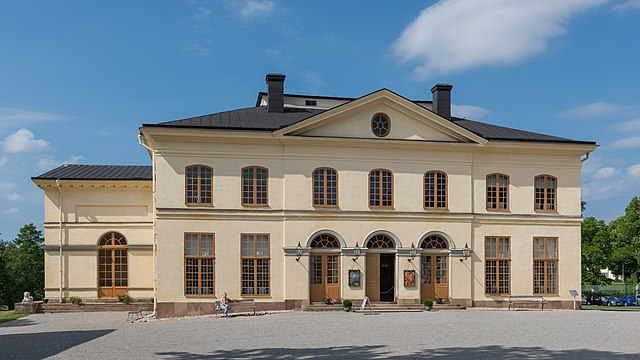
The Drottningholm Palace Theatre is a Baroque theatre located in the grounds of the Drottningholm Palace in Stockholm, Sweden. It was built in 1766 and is one of the most well-preserved theatres of its kind in the world. The theatre is renowned for its authentic 18th century design and décor, as well as its performances of opera and ballet. The theatre is situated in a two-story building which stands on the grounds of the palace. The exterior is decorated in a neoclassical style with a three-bay façade. The interior is decorated in a Baroque style, with the walls painted in pink and green, and the ceiling adorned with a delicate floral pattern. The auditorium is decorated in an ornate Rococo style, with gold and silver accents and ornately carved woodwork. The auditorium seats up to 500 people and has a large stage, which is framed by a pair of arched proscenium doors. The theatre is renowned for its acoustics, which are said to be among the best in the world. This is due to the design of the auditorium, which has been designed to amplify sound as much as possible. The theatre also features a special ventilation system which allows air to circulate throughout the auditorium and keep it at an ideal temperature. The theatre has been the home of a number of important performances over the years, including the world premiere of Mozart's opera 'The Magic Flute' in 1791. The theatre is still used to this day, with performances of opera and ballet taking place throughout the year.
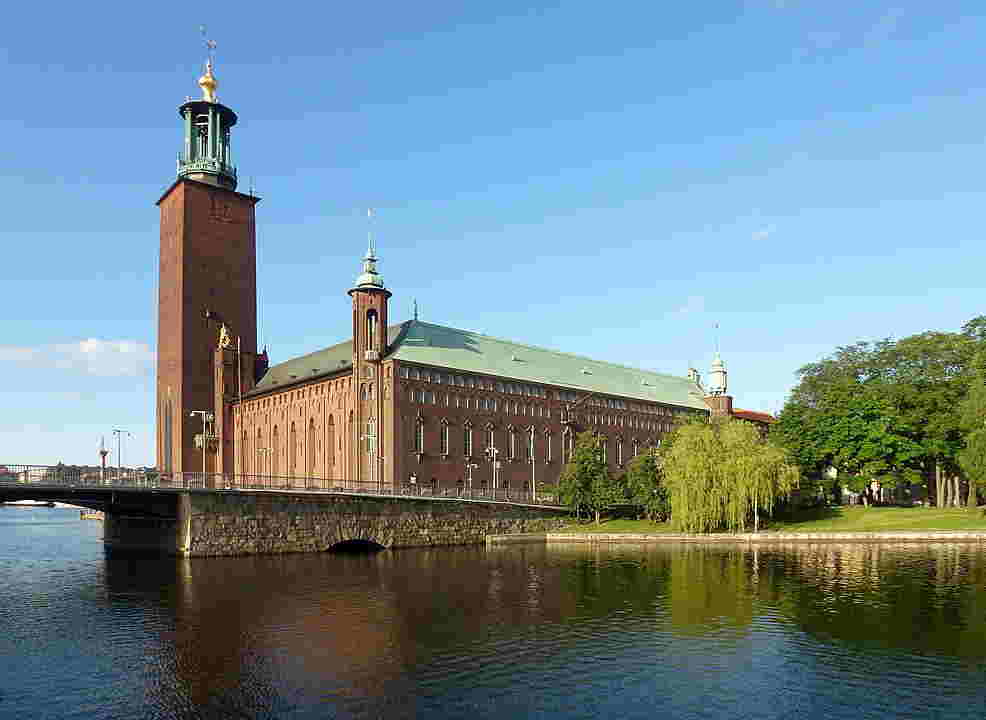
Stockholm City Hall is an impressive and iconic building located in Stockholm, Sweden. It is the site of the Nobel Prize ceremony, held annually on December 10th, and the venue for many official receptions and ceremonies. The building is a national symbol of Swedish democracy and civic pride. The City Hall was designed in 1923 by architect Ragnar Östberg, who was inspired by the medieval city halls of Germany, the Netherlands, and Italy. The building stands atop a hill, overlooking the surrounding city and harbor, and is made up of a four-story main building, two towers, and a number of wings and annexes. The main building is constructed of red brick with granite and limestone trim, and its towers are topped with copper spires. The Blue Hall, located on the ground floor, is the most impressive of the building’s rooms. The Blue Hall is the site of the Nobel Prize ceremony and is decorated with elaborate gold-leaf ornamentation, a magnificent fresco of the creation of the world, and a spectacular stained-glass ceiling. The Golden Hall is located on the second floor and is the site of many official receptions and ceremonies. The Golden Hall is decorated with 18 million mosaic tiles of gold, blue, and green, depicting Swedish history and its provinces. The exterior of the building is just as impressive as the interior. The two towers are 73 meters tall, each topped with a copper spire, and the building is surrounded by a large, open courtyard. Stockholm City Hall is a beautiful example of Swedish architecture and an iconic symbol of Swedish democracy and civic pride.
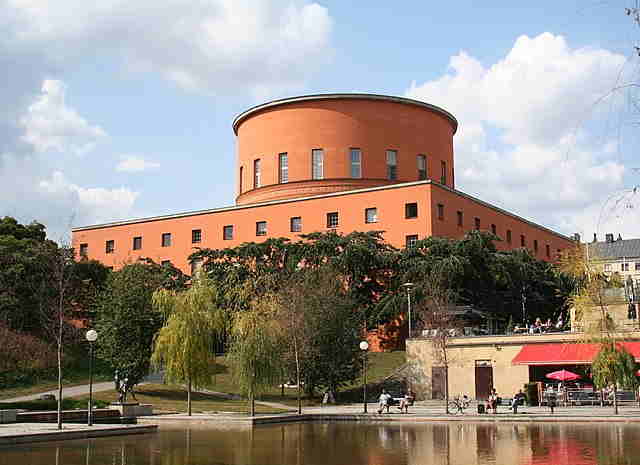
The Stockholm Public Library, located in the heart of Stockholm, Sweden, is a majestic and iconic cultural institution that was designed by Swedish architect Gunnar Asplund. The library is a prominent example of the Scandinavian architectural style known as Swedish Grace, blending classicism with functionalism to create a timeless and elegant structure.
The library's main building, completed in 1928, features a striking circular design with a central rotunda that serves as the focal point of the entire complex. Its facade is adorned with intricate stone carvings and sculptures, showcasing a harmonious combination of art and literature. The building's interior is equally impressive, with a grand staircase leading visitors to the upper levels, where they can explore an extensive collection of books, periodicals, and multimedia resources. One of the library's most distinctive features is the renowned Rotunda Hall, a spacious reading room crowned by a magnificent dome adorned with colorful murals by Swedish artist Einar Forseth. The Rotunda Hall serves as a tranquil oasis for reading and contemplation, providing a serene atmosphere that inspires and captivates visitors.

Skogskyrkogården, located in Stockholm, Sweden, is a unique and beautiful UNESCO World Heritage Site. The area is a combination of cemetery, memorial, and park, blending natural beauty with historic, cultural, and spiritual values. The park was designed by two renowned architects, Gunnar Asplund and Sigurd Lewerentz, in the 1920s. The Swedish Government commissioned the project to commemorate the 300th anniversary of the Swedish church and to serve as a burial ground. The design of the park is unique, blending nature and architecture in a unique way. The park combines a variety of elements to create a tranquil and spiritual atmosphere. The park features several monuments and sculptures, as well as a variety of trees and plants. The trees, in particular, are a significant feature of the park, with many species that are native to Sweden. As such, the park provides a habitat for a variety of wildlife, including birds, amphibians, and mammals. The park also features four chapels, each designed in a distinct style to reflect different aspects of the Swedish church. The cemetery is divided into four sections, each designed to reflect a different part of the Christian faith. These sections are the Garden of Creation, the Garden of Redemption, the Garden of the Cross, and the Garden of the Resurrection. Each of these gardens has its own unique character and design. Skogskyrkogården is a place of remembrance and reflection, and visitors often come here to pay their respects to the deceased and to spend time in nature.